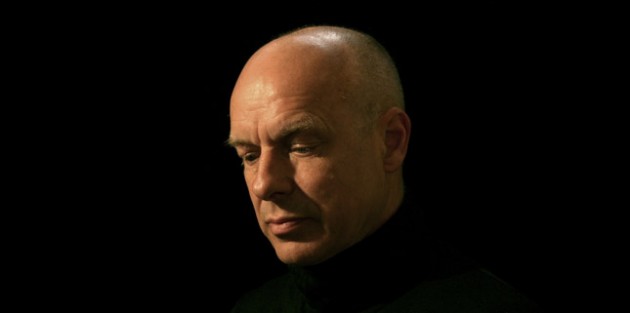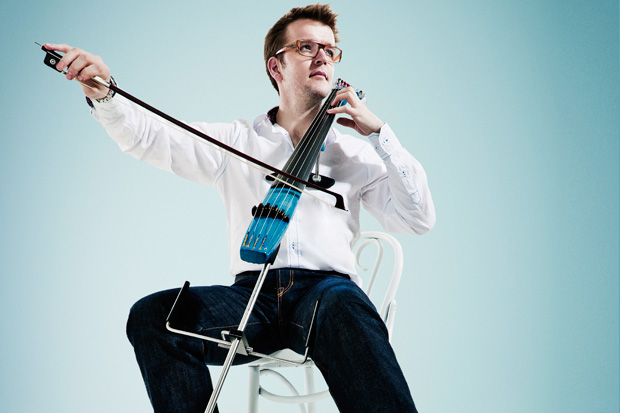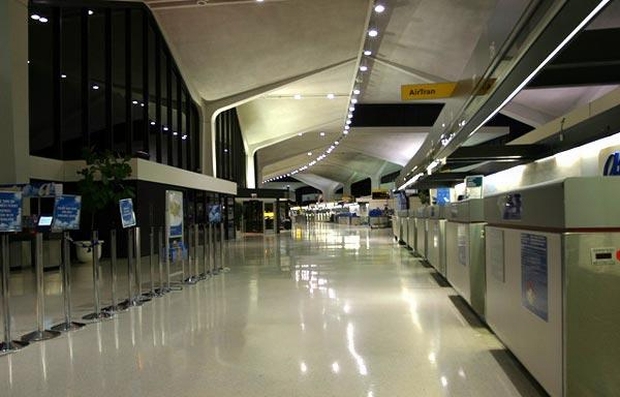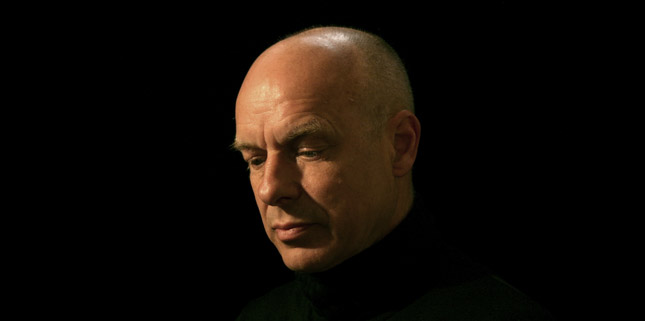
A few months back I found myself with nearly a whole waking day to waste in Newark Airport. (I use the phrase “I found myself” a little too colloquially – in actuality I knew I would have this time to kill from the moment I booked my flights months before.) It was a situation which many hundred air passengers deal with everyday – both expectedly and unexpectedly — so I was no special case. But, even to someone as inexperienced with air travel as I am, who finds the whole airport experience strangely fascinating, wasting away eight and half hours in an airport terminal is not as easy as I’d hoped.
Listening to music was, of course, cited in my head as one of the main ways to let the hours, um, fly by. Before I departed on my trip I had my iPod fully charged and almost pregnant with new albums to listen, both for future reviewing purposes and to satisfy my own personal interest. But an idea also struck me, especially when I considered the fact that I would stuck in a terminal for a greatly extended period of time: I wondered if Brain Eno’s Music for Airports sounds any different — better or worse — when you’re actually listening to it in an airport. I figured this would be a perfect time to find that out and considered noting down anything particularly interesting that might come from the listening experience.
And then I also recalled a record I had reviewed at the end of 2010 — Terminal by Peter Gregson. He wrote it while sitting in airport lounges and created it as an ode to the experience of air travel. And in my review of the album I found myself (somewhat inevitably) comparing it to Eno’s opus, trying to match the music to the images I had of airports while indirectly pondering what it might sound like in an actual airport. So I decided I might put this all to the test: do these two albums sound any different when played in the setting that inspired them? How do they compare and contrast in this setting? And, ultimately, which album sounds better when played in an airport terminal?
These questions could well be deemed pointless by some, but I’ve always been a devoted believer that one’s surroundings can affect how we interpret and hear music. Location, I believe, can both heighten the effect of music and detract quality from it. If that sounds nonsensical then I’d urge you to take in a Burial album while walking home late at night, or listen to The National’s excellent 2007 album Boxer during a blackout, but at the same time I’d urge you to keep Julianna Barwick’s wonderful The Magic Place for indoors and ideally during a hazy summer morning. Of course, these are somewhat clichéd and personal examples; the conditions I’ve described could well produce the opposite effect for other listeners. But my point is to try and put this belief of mine to the test, by playing two albums in the most apt and fitting locations to find out if they really do sound better. What follows is a combination of the notes I made on that day I was in Newark Airport while listening to these albums and some analytical thoughts on the songs and the whole experience itself.
II.
It didn’t take me long to get absorbed into the first track of Music for Airports. The first thing I wrote about the track “1/1” in my journal is simply the phrase “perfectly ambient.” It drains out any noise from hurrying commuters and the mechanics of escalators or baggage carousels. The only noise that penetrates the music are the loud (and annoyingly regular) security announcements. I imagine back in 1978, when the album was first released, airports might well have been a somewhat quieter place. Sure, there would still be plenty of people bustling about and a whole host of other noises, but I imagine before 9/11 happened, the amount of security announcements weren’t as frequent. And it’s these announcements over the tannoy system that jolt me back into reality and remind me that I’m sitting in Newark International Airport watching people go down long corridors, never to be seen again as they fly off to their destinations.
With the second track, “1/2,” I once again started off my description with a simple two-word phrase: “strangely ghostly.” I suppose all the tracks have a certain eerie quality to them, but this track in particular seems to unsettle me the most. I imagine a near impossible image as I listen to this track: a completely deserted airport, like a scene from 28 Days Later or perhaps Waltz With Bashir (with less destruction). But, as I said, such a situation is very unlikely in this day and age. There’s always going to be someone about — airline staff, cleaners, and other stranded commuters like myself. With this track the air seems heavier, and there’s a fearful sense of dread, making me think this would almost definitely freak potential passengers out if played over loudspeakers. Each single “ahhh” seems to leave a streak of calmly optimistic light behind it, like the heavy air is slowly lifting.
After about 25 minutes of sitting, gazing at people passing by, I began to feel restless, so I took my listening on a walk. Sitting down, the effects of “2/1” were not working (if, indeed, there is an actual effect to be had from it). Again, the voices on this track seem to have an ominous effect, which all seems to be heightened by the fact I’m traveling this walking escalator by myself. The one in the opposite direction is full of people, some just letting the machine do the work while others hurry along it, allowing it to speed up their stride. The music adds a strange regal quality to the expensive shops as I pass by them: shops of designer men’s suits and the clean, untouched, almost plastic look to the numerous perfume shops. I can’t help but think about how picaresque and cinematic this all sounds. If Lars Von Trier had made the movie The Terminal, perhaps it might have looked (and sounded) like this.
As the final of the four tracks, “2/2,” starts playing in my ears, I’m gazing out onto the airfields. Although the track is kind of slowly paced, it’s a strangely congenial soundtrack to men packing and unpacking bags onto planes and golf carts scurrying about the tracks. Perhaps the image is best matches is the planes lumbering to their designated runway, like they’re pretending they’re cars. The sky is clear apart from the faintest telling of clouds in the distance; it’s a kind of beautiful but (as news shows tell me) cold day, qualities this track seems to have. There’s something simple and exquisite about this track, something alien yet familiar. I imagine 30-some odd years ago these sounds would have been strange, but in these times, synthesizers are all too familiar in a vast majority of musical settings.
I’m inclined to use the word “regal” again when describing this track. These are sounds I can imagine featuring on an airline’s safety demonstration video. But as the tones combine, there’s a sadness to it all; one tone reaches for the sky while another keeps it grounded. Perhaps this is a reason why it’s not primary airport music. People want to be free, to fly and so forth. No one wants to be reminded that they are grounded and stuck in an airport — even if that quite simply is the case. They want hope that their way out isn’t far away. For me, as I reach the end of the album, it’s still about five hours away (and that’s not including the time spent flying). As “2/2” came to an end, I found myself in the food court, and decided maybe it was time to get something to eat so I could, at the very least, create a noticeable gap between the end of Music For Airports and the beginning of Terminal.

III.
Because I reviewed Peter Gregson’s album Terminal not too long ago (well, it doesn’t feel that long ago), I feel like I’m much more familiar with it than Music For Airports. Also, and perhaps because of this, I have a series of fixed images for what these songs are soundtracking. With opening track “Minus (-),” that image is of a lone person (myself, or perhaps Gregson) sitting in the middle of a vast airport lounge as people rush by in a blur. Again, it’s a rather cinematic image, but Terminal has a cinematic edge — a point I don’t think I mentioned in my original review. I tried to recreate this image in Newark Airport but it doesn’t really have seats in the middle of anywhere – everything is kept neatly to the sides. And unless I started tripping on LSD or plunged into an isolated depressed state of mind, the people around me weren’t going to start turning into a hazy blur. Yet the track still sounds perfect for this airport (and, I imagine, any others). The fact that Gregson’s music conjured up this dream-like image in my head means he succeeded in creating something inspiring and, well, airportish (if I might be permitted to coin that phrase for the course of this essay).
As “Flight Plan” enters with a great deal more movement, I once again create my own specific image. As the cello goes from note to note in an almost dizzying fashion, I imagine planes swaying about in the air — Boeings acting like fighter jets. Ominous tones keep emerging in the background; you don’t really want airport music to frighten you but sitting in an airport with this playing, I can’t help but feel the tension rise. Even when the background fades, all we’re left with is a sense of open air and even that feel uncomfortably blank. The absence of the backdrop is like the absence of safety, like one is freefalling; and even imagining freefalling through such a beautiful clear sky like today’s is not as pleasing as one might hope. There’s a brief glimmer of light just before the background reappears (excellently I might add; subtle but simple) and the original melody returns. It’s still unsteadying but after all that blank space, it’s good to have something.
With such dramatic descriptions, I can’t help but feel I might be taking this whole thing a little too seriously. Or maybe I’m just getting totally absorbed. Either way, perhaps it’s a good thing that the third track “Orb” brings me back to reality. Unfortunately it’s because I can’t match the pace of the song to anything around me. I try walking about, and then try sitting down and staring at commuters, but nothing fits. The only apt time I can imagine this sounding perfect is when you’re on a plane and it’s rising into the clouds, but usually at that point in the journey my iPod has to be switched off.
“Spin” is another track I can’t seem to place. I want to match it to the movement of a plane rising but when the flurry of dissonance comes in at the two and half minute mark, there’s a sudden worrying sense of dread to it all. Perhaps it’s the sound of your ears popping due to the pressure. Whatever the noise might signify, the sound of the other side of it is a great deal more majestic and peaceful, but it’s not long before those rigid strokes reappear. And then there are those wonderful noises that sound both like bombs dropping and birds singing, as the sun catches your eyes as you seem to move slowly past the clouds outside. A track like this seems full of emotions and possibilities, all while making me wish I was in air instead of still on the ground.
The title of “Dark Light,” I suppose, could be taken literally — night turning into day whilst up in the air. Hours jumped ahead. Or perhaps it could be a reference to that dreaded tired feeling you encounter when you can’t settle or sleep in your seat. Or just the horrid impending jet lag. The stodgy melody seems to trying to capture this as it seems to struggle to move itself forward at times. Then there’s that splash, and it sounds like heaven afterwards. Rising light and shimmering streaks surround you, it’s like first time you see the clouds from a plane’s window. Oddly the surrounding sounds of the track remind me of the blank figures from the Doctor Who episode “The Unquiet Dead,” or just, once again, of an empty airport. I imagine gazing around to see no one but still noticing how glorious the day outside is. I can’t help but think the inevitable thought; “I wonder what the weather is like at home?”
The sheer brightness of final track “Plus (+)” definitely seems akin to waking up to find yourself arriving at your destination. There’s a great sense of warmth and hope, but it also sounds groggy, like it’s casually awakening from a sleep. It’s the sound of a new atmosphere hitting you; a new sun, a new set of smells – a seemingly new world. But there’s a careful trepidation between the notes, implying it’s not all bright sunny lights out there. As one arrives at their destination there’s often the realisation that arriving is only one part of it, and actually getting out of the airport is another challenge in itself as you wait for your luggage, and then wait in line to get past security. Once you’re free, then maybe your adventure can begin — an adventure outside the airport.
IV.
I realised subsequently that there’s a great difference between these two albums. Eno’s opus is about the time we spend in the airport itself: the feelings we encounter and the attention we pay to everything around us (including sounds). Gregson’s album, on the other hand, seems concerned with the journey itself (or at least that’s how I interpret it; I may just have been stuck in the airport too long). Although it was written primarily in airport terminals/lounges, it seems to soundtrack a journey where being in the airport is only part of the ordeal. Eno’s work was created with a function in mind (“to defuse the tense, anxious atmosphere of an airport terminal”) while Gregson’s is, as previously noted, more an ode to something that seemed to affect and/or inspire him.
In terms of how they sound, both albums fit the setting of an airport about as well as you can imagine. Whether or not you get lost in the music or find it as apt as I did at times, is a purely subjective interpretation. Having people rush about me, and being able to look at huge planes outside huge windows certainly did seem to act as springboard for my imagination, but as I said with the tracks of Terminal, I already had a series of images in my head from previously listening to it. Had these been my first listens to the albums while stuck in the airport, my thoughts might have been different, but I can’t imagine them being negative in any way — both are wonderful albums when listened to somewhere far away from an airport. In the airport itself though, Eno’s album seems much more apt and fitting. It’s ghostly, strange, calming, and airy, and if those aren’t descriptions that seem appealing in a typical airport setting, they certainly seemed to provide a welcome escape from the hustle and bustle of airport life, where brand names are everywhere, and the only thing you’re enticed to do while stuck there is spend money. I would love to have Terminal as a constant soundtrack for the entire plane journey, from waiting at the gate, to boarding, to landing at my destination. It’s album that relishes and seems to expel the idea of movement, so listening to it while sitting for hours on end in an airport isn’t entirely ideal.
But a thought has struck me since all this sitting in Newark Airport. Eno was inspired to create Music for Airports after being stuck in Colonge Bonn Airport for hours and getting “extremely annoyed by the uninspired sound atmosphere.” Back then, in the mid 1970s, there wasn’t much you could do about the music around you. Walkmen were yet to come onto the scene so you couldn’t drown out whatever uninspiring noise there was with your own favoured music. Back then, Music for Airports had a realistic function in everyday life; it’s just a shame it’s more likely to unsettle and weird people out than relax them. Now, as we all carry about our iPods, iPhones and other branded MP3 players, we can create our own “sound atmospheres.” We can drown out the noises around us with whatever music we want, whether it’s Music for Airports, Terminal, or a good old fashioned, rousing rendition of Frank Sinatra’s “Come Fly With Me.”


